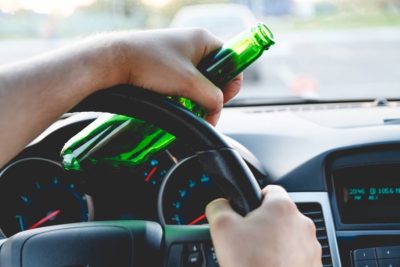Drunk drivers put everyone on the road at risk. Study after study has confirmed the dangers associated with drinking and driving, yet people continue to do so on a regular basis, as evidenced by the sheer number of drunk driving accidents that take place each year in the United States.
Fortunately, if the intoxication of the other driver is typically legally sufficient to allow victims recover compensation for their injuries. But how can you prove that a driver was drunk after an accident? Here are some of the most common ways that accident victims may establish that the other driver consumed more than the legal limit at the time of an accident, and therefore secure compensation for their losses. If you have any questions or would like to discuss a specific case with an attorney, contact us online or call our office today.
Direct Evidence of Intoxication
In many car accident cases involving drunk drivers, police respond to the scene and obtain evidence of the other driver’s intoxication. This may involve simple observations on the part of the officer or chemical testing of the other driver’s blood, breath, or urine. In most cases like this, the other driver faces a criminal DUI case after the accident, and the outcome of that case (which typically is a guilty plea provided pursuant to a plea agreement) can help any civil case that victims pursue. Put simply, a driver who admits to intoxication (or whom a court convicts) in a criminal case arising from a car accident cannot turn around and claim sobriety in a civil claim arising from the same incident.
Circumstantial Evidence
In some cases, direct evidence of a driver’s intoxication at the time of an accident is not available. Perhaps the driver sped off after the accident or the police forgot or were unable to perform sobriety testing after the accident took place. Even when this occurs, however, you may gather circumstantial evidence that indicates that the driver was drunk when the accident took place. In a civil case, the plaintiff must only prove that the other driver was drunk (or otherwise negligent) by a preponderance of the evidence—meaning that the driver was more likely intoxicated than not. Circumstantial evidence can establish a likelihood of intoxication, including the testimony of a bartender who served the driver shortly before the accident, the testimony of others who witnessed the driver’s erratic behavior or drinking, or the presence of bottles or cans of alcohol in the vehicle after the accident.
Call Us Today to Schedule a Free Consultation With an Indianapolis Drunk Driving Accident Lawyer
If a drunk driver injured you in an auto accident, you have a strong chance of recovering compensation for any losses that you sustained, including damage to your vehicle, medical expenses, physical and emotional pain and suffering, and lost income. To schedule a free case evaluation with attorney Bill Hurst, call our office today at (317) 636-0808 or send us an email through our online contact form.




